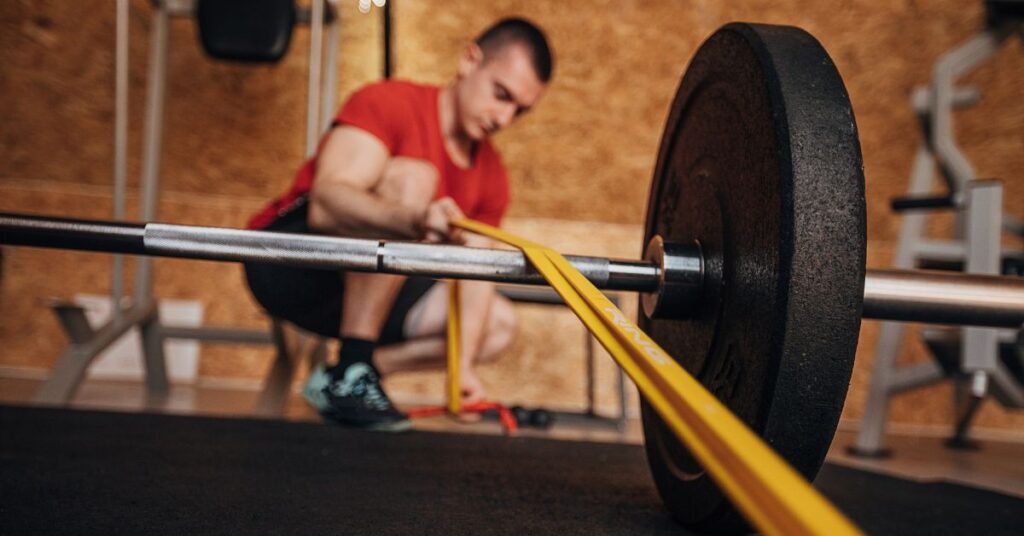
“The curse of modernity is that we are increasingly populated by a class of people who are better at explaining than understanding, or better at explaining than doing.” – Nassim Taleb
We are blessed to live in the information age, with virtually any bit of information at our fingertips. From countless CEU courses to hard drives filled with e-books, no coach is lacking in information. You can find numerous articles across the internet with Top 10 book lists, and these are all great resources—I have used many of them to fill my own bookshelf and CEU requirements. But I fear they may be incomplete.
I have noticed a trend in young coaches having tremendous book knowledge of training but little understanding of how that training plays out. It’s one thing to know Prilepen’s chart, but a whole other thing to understand the training effects of 15 optimal reps between 80% and 90%. It’s one thing to understand the theory behind accommodating resistance, it’s a whole other thing to understand just how quickly accommodating resistance can wreck a training session. Just like a martial arts master, we must not only know the concepts in theory, but in practice too.
I have noticed a trend in young coaches having tremendous book knowledge of training but little understanding of how that training plays out, says @Tate_Tobiason. Share on XThe following is a list of five programs I believe every young strength coach should run for a training cycle to experience the principles and concepts of these influential programs firsthand—each has a key takeaway that can be learned from running it. Some of these programs I found myself through reading, while others were introduced to me by mentors and others introduced to me through colleagues. So, without further ado, let’s jump in.
Program #1: Jim Wendler’s 5/3/1
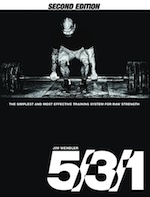 5/3/1 is a staple programming approach used by many strength coaches due to its simple yet effective approach to loading the primary lifts. Created by Coach Jim Wendler, 5/3/1 programs calculate percentages based off 90% of the athlete’s one-rep max (1RM). The program then cycles through plus sets each week of 5+, 3+, and 1+, with a de-load in week four.
5/3/1 is a staple programming approach used by many strength coaches due to its simple yet effective approach to loading the primary lifts. Created by Coach Jim Wendler, 5/3/1 programs calculate percentages based off 90% of the athlete’s one-rep max (1RM). The program then cycles through plus sets each week of 5+, 3+, and 1+, with a de-load in week four.
When I was a young strength coach, I was proud of my squat number and did not follow the prescription of programming off 90% of my 1RM. Experienced coaches know where this is going…and oh, my gosh, I wrecked myself. I was still able to hit good numbers but beat myself up so much with grinding sets that I did not make good progress. I then humbled myself, ran another cycle of 5/3/1 using 90% of my 1RM for calculations, and—what do you know—I started hitting PRs and feeling a ton better.
This helped me understand that submaximal reps can go a long way in an athlete’s training and how 5/3/1 could be easily applied to non-strength sport athletes who shouldn’t get beat up by the barbell, but can still benefit from raising max strength.
Key Takeaway—Athletes can gain substantial strength through submaximal loading parameters.
Program #2: Westside Barbell
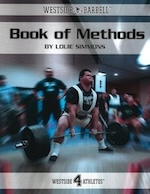 Westside training is probably one of the most misunderstood and abused programs out there. From speed sets being too heavy to max effort days taking hours on end, the training looks nothing like the original intent.
Westside training is probably one of the most misunderstood and abused programs out there. From speed sets being too heavy to max effort days taking hours on end, the training looks nothing like the original intent.
Like it or not, Westside Barbell has an enormous impact on strength and conditioning. So do yourself a favor, purchase the Westside Barbell Book of Methods, and run the program to a T. Until you build up to a max-out single in 20 minutes, perform 10 sets of speed squats with max intent on the minute, or do sled pulls for a half mile, you don’t know what Westside training is. Learn what a proper box squat is supposed to not only look like but feel like.
Furthermore, every young coach should experience firsthand the catch-22 that is accommodating resistance. It’s great in theory and when you set it up right, but if you mess up your resistance band setup, you will pay with an uneven barbell or overloaded resistance that crushes the athlete. It was only by running Westside cycles that I truly came to understand what the max effort, dynamic effort, and repetition method were about, along with the purpose of conjugate exercise selection.
Every young coach should experience firsthand the catch-22 that is accommodating resistance, says @Tate_Tobiason. Share on XCoaches seem to either love or hate Westside, and I’m not here to determine a verdict on it, but before you pass judgment, give it a shot.
Key Takeaway—Running a Westside program creates a better understanding of the max, dynamic, and repetition effort methods.
Program #3: Old School Husker Power
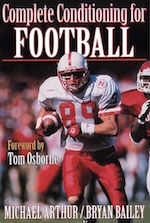 Full disclosure, I was born and raised in Nebraska and had the privilege of interning at the University of Nebraska, learning from Boyd Epley and Mike Arthur. I did not choose this program out of nostalgia or so that young coaches know their history. All of those are good aftereffects, though. I chose this program because, as Mike Arthur told me one day on the floor, “I know my old program might be outdated, but it’s better than half the programs I see nowadays.”
Full disclosure, I was born and raised in Nebraska and had the privilege of interning at the University of Nebraska, learning from Boyd Epley and Mike Arthur. I did not choose this program out of nostalgia or so that young coaches know their history. All of those are good aftereffects, though. I chose this program because, as Mike Arthur told me one day on the floor, “I know my old program might be outdated, but it’s better than half the programs I see nowadays.”
For those who don’t know, the Old School Husker Power program consisted of four training days a week, with two strength days and two power days. Strength days were full body lifts utilizing compound barbell and dumbbell movements, while power days consisted of various Olympic lifts and plyometrics. Each strength day and power day was completed twice in the week, with one being a heavy day and the other being a light day. The heavy–light system provided the athlete exposure to various muscular contraction rates throughout the week, building more than just showy muscle.
There have been many adaptations and tweaks to this original approach, but I believe that young coaches should experience how effective a simple program like this can be. Doing heavy squats on Monday (3 sets of 5 at 60%, 70%, and 80%) and light squats on Thursday (3 sets of 5 at 40%, 50%, and 60%) goes a lot further than you may expect. You can find the original program in Complete Conditioning for Football, written by Mike Arthur and Bryan Bailey.
Doing heavy squats on Monday and light squats on Thursday goes a lot further than you may expect, says @Tate_Tobiason. Share on XKey Takeaway—The basic concept of heavy and light days can go a long way in physical preparedness.
Program #4: Triphasic
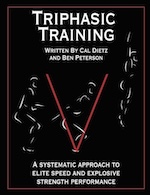 I don’t know about you, but Triphasic to me feels like that program which everyone knows about, but no one has ever done. Cal Dietz is a mad scientist and the theory behind the program is solid—but, until you do it yourself, you won’t understand the group training limitations and coaching constraints you will need to account for. Oh, and let’s not forget how difficult the training can actually be. Overload eccentrics killed me not only in the lifting but in getting the bar back up on the rack. Furthermore, I discovered a newfound respect for isometrics after seeing stars from a pin pull.
I don’t know about you, but Triphasic to me feels like that program which everyone knows about, but no one has ever done. Cal Dietz is a mad scientist and the theory behind the program is solid—but, until you do it yourself, you won’t understand the group training limitations and coaching constraints you will need to account for. Oh, and let’s not forget how difficult the training can actually be. Overload eccentrics killed me not only in the lifting but in getting the bar back up on the rack. Furthermore, I discovered a newfound respect for isometrics after seeing stars from a pin pull.
Each section of the training plan—eccentrics, concentrics, and isometrics—are fantastic, but require firsthand experience and verbatim adherence the first time around to properly understand the system before one starts to tweak it. Triphasic is a fantastic training reset for coaches coming from Olympic and powerlifting backgrounds, allowing them a chance to better understand muscular contraction rates and how they affect training performance.
Key Takeaway—There are more training parameters than just sets, reps, and weight.
Program #5: 1×20
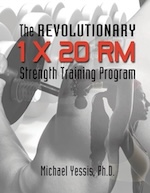 We all know the joke “anything above five reps is cardio”—which is all for good laughs until our training devolves into nothing but five reps or less. This is one of the reasons I believe every coach should run a 1×20 training cycle. Created by Michael Yessis, 1×20 bucks conventional strength training understanding by exposing the athlete to a wide variety of movement variations at higher rep ranges.
We all know the joke “anything above five reps is cardio”—which is all for good laughs until our training devolves into nothing but five reps or less. This is one of the reasons I believe every coach should run a 1×20 training cycle. Created by Michael Yessis, 1×20 bucks conventional strength training understanding by exposing the athlete to a wide variety of movement variations at higher rep ranges.
This program is not designed for body building, nor is it designed for strength gain. The byproducts will produce benefits for both, but the goal of the program is to develop increased proprioception and work capacity throughout the system using high-rep sets covering numerous joint actions. One set of 20 reps may not seem like much, but when compounded through multiple exercise selections with minimal rest, these workouts quickly demonstrate their worth.
We all know the joke “anything above five reps is cardio”—which is all for good laughs until our training devolves into nothing but five reps or less, says @Tate_Tobiason. Share on XThis style of training is great for athletes with low training ages and athletes who need the benefits of the weight room. Furthermore, going down a Michael Yessis rabbit hole is great for any coach’s understanding of physical preparedness.
Key Takeaway—Athletes can benefit from rep ranges north of five.
5 Honorable Mentions
1. Dan John: One Lift a Day
K.I.S.S.: keep it simple, stupid. In a world of over-programming, focusing on one lift for 30 minutes with intensity is a breath of fresh air, demonstrating how intent can play a big role in physical preparedness.
2. New Functional Training for Sports
Love him or hate him, Mike Boyle is a leader in strength and conditioning and his methods are far too often straw-manned. Take some time and experience his methods firsthand and see what you like and dislike about them.
3. Juggernaut Training System
This is one of the best adaptations of powerlifting methodologies to physical preparedness I have used. Furthermore, the hypertrophy systems used in Juggernaut help build “functional” muscle mass.
4. Tier System
While not used by many today, the Tier System still stands out as a solid program and one which coaches can easily adapt for general-population clients on the side. Full body workouts with a template that’s easy to remember and won’t harm the client while mixing it up go along way with general population.
5. VBT
Like it or not, technology has made its way into the weight room. Before programming VBT for any group of athletes, a coach should have firsthand experience with how the system works along with the feedback loops it provides.
Writing Your Own Programs
There are countless ways to write a program. Many work. Some are downright awful. But no matter what you do, make sure you know how to do the program firsthand before you consider it, condemn it, or attempt to coach it.
Spend the time reading and learning, but don’t forget about getting under the bar. Weight room calluses, bloody shins, and welts from a poorly set up resistance band can be the best teachers. Get in the weight room, expose yourself to a wide variety of training methodologies, and learn from them. The moment we become closed off and have “our system” is when we start to backslide.
Since you’re here…
…we have a small favor to ask. More people are reading SimpliFaster than ever, and each week we bring you compelling content from coaches, sport scientists, and physiotherapists who are devoted to building better athletes. Please take a moment to share the articles on social media, engage the authors with questions and comments below, and link to articles when appropriate if you have a blog or participate on forums of related topics. — SF

Whatever happened to Bigger Faster Stronger / Greg Shepherd’s leadership?